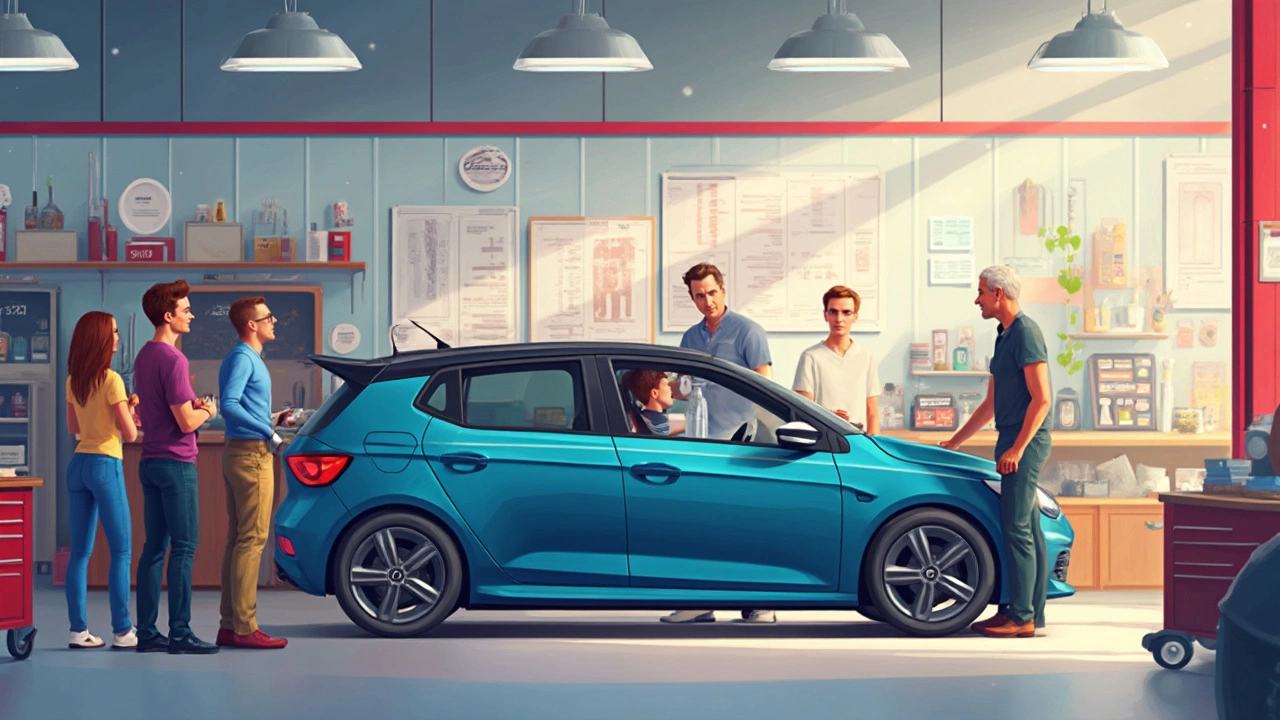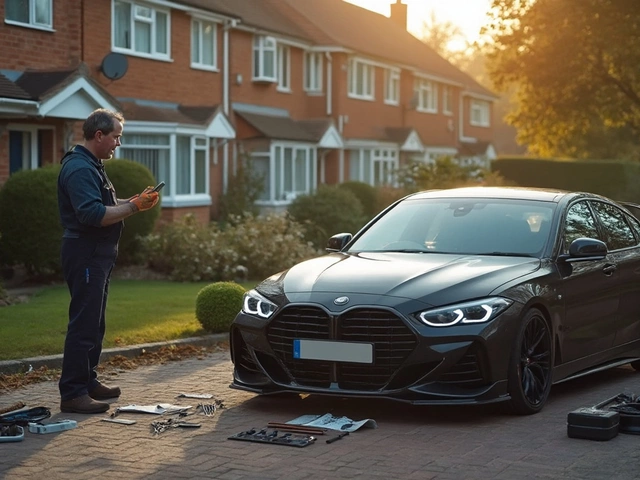The crazy thing about car spoilers is how much they make people talk—and argue. Some swear spoilers are nothing but show, no go. Others claim they’re the secret weapon for keeping your ride glued to the ground. But forget the hype for a second. Let’s get real: how much do spoilers actually cost if you’re set on adding some flare (or maybe real function) to your car in 2025? Dig in—this isn’t your boring old price chart. You’re about to get the real scoop.
What Impacts the Cost of a Car Spoiler?
If you’ve ever browsed car forums, you know spoilers are all over the map—fiberglass wings, plastic lip spoilers, carbon fiber monsters, even wild 3D-printed jobs. The price swings are huge, but why?
First, the material is a big factor. Fiberglass is cheap to make, light, and easy for manufacturers to mold. You’ll see fiberglass spoilers for as low as $75 if you’re just getting a basic look. ABS plastic falls in the same ballpark, maybe $90 to $150 retail, and often these ship unpainted. Carbon fiber? Now we’re talking serious money. These can start at $350 for the really plain ones and soar past $1500 when you get into racing-grade stuff. The look, the weight, the bragging rights—all pay for that carbon finish.
But materials aren’t the only thing. You’ve got universal spoilers and custom-fit models designed for your exact make and model. Universal spoilers are cheaper, usually $60 to $120, because they’re made to fit a bunch of cars (sometimes they don’t fit perfectly, though). Custom spoilers, built for a Toyota Supra, Mustang, or Civic, cost more—factory official ones can creep past $300 before you even touch paint or labor.
The manufacturer matters. OEM (original equipment manufacturer) spoilers can double the cost of a no-name aftermarket wing. Why? Factory paint, fit, and long-term durability—it all adds up. Brands like APR, Seibon, or Mugen? Those nameplates can add hundreds just for that logo.
Don’t forget wild cards—supply chain weirdness, popularity spikes (hello, Fast & Furious), and whether the spoiler comes pre-painted make a difference. You’ll pay more if you’re in a hurry or want the exact shade to match your car without a trip to the paint shop. And, not even kidding, some high-end spoilers for performance cars come in at $2500+, like the ones on McLaren or Porsche models.
New vs. Used Spoilers: Is It Worth Buying Used?
Here’s a little secret: tons of people find nearly new spoilers on eBay, Facebook Marketplace, or local junkyards for a deep discount. Used spoilers—especially stock options—can shave 40-60% off the price. Why so cheap? Sometimes owners upgrade, or a car gets junked but the wing survives in perfect shape.
But buying used can be risky. Maybe the mounting points are cracked, which will come back to haunt you after install. Sometimes paint is scratched up from road debris or a careless previous owner. That means more hassle and extra money for repairs or new paint. And, if you buy a knock-off from a shady seller, fitment can become a nightmare. You won’t save much if you have to keep fixing it.
I’ve seen some real steals: friend of mine snagged a genuine MazdaSpeed 3 rear spoiler for $80 at a pick-and-pull yard—normally $400 new—and after a little cleaning, it looked original. If you’re patient, and don’t mind a few dings or waiting for the right color, used spoilers are an awesome way to save.
Pro tip: Always double-check measurements, and ask for lots of pictures before buying online. Nothing’s worse than a ‘bargain’ that doesn’t fit when you get it home. Also, find out if any hardware (nuts, bolts, gaskets) is included. Buying missing install parts separately can ruin the deal.

The Installation Factor: How Much Will You Pay to Get It On?
Getting the spoiler isn’t the end. You’ve got to get it mounted—and that’s where plenty of DIY car people hit the pause button. If you’re handy, you can save a pile of cash. Simple lip spoilers are often stuck on with 3M automotive tape (under $20 at any parts store). If it’s a universal fit, expect to do lots of measuring and drilling. Factory fit? Usually holes are already in your trunk lid, which makes life way easier.
If you’re paying a shop, the cost goes up fast. Most body shops charge anywhere from $75 to $250 to install a basic spoiler, depending on complexity. Some require special tools or even removing the trunk lid for precise placement. Painting adds more, usually $100 to $400, because they have to match your car’s shade (and modern car paint blending is no joke). If you buy a factory-painted spoiler, you save here.
There’s always the DIY risk. Drill a hole in the wrong spot and you’ll hate yourself. But DIYers swear by YouTube tutorials, and you can often find video walk-throughs for your exact car model—or even call up tech support from reputable brands if you get stuck.
Here’s what a typical install cost breakdown might look like:
| Task | Low Cost | High Cost |
|---|---|---|
| Professional Installation (small lip) | $75 | $120 |
| Professional Installation (raised wing) | $150 | $300 |
| Painting/Matching | $100 | $400 |
| DIY Materials (tape, bolts, sealant) | $25 | $60 |
Add those up, and you can see how the total cost for your spoiler might double if you go the pro route. But you avoid a leaky trunk or rattles that’ll drive you nuts on the highway.
Is a Spoiler Actually Worth the Money?
Okay, let’s get brutally honest—does bolting a spoiler onto your daily driver actually do anything, or is it just for looks? The internet is full of wild claims, but here’s the reality. On most street cars (under 80 mph, on public roads), spoilers are almost entirely about style. A big wing on your Honda Civic won’t magically push the car onto the pavement at grocery-store speeds. You won’t see proper downforce unless you’re hitting speeds you probably shouldn’t be on the street.
That said, spoilers can shine on the track. Cars with higher horsepower—the Subaru STI, Nissan Z, and of course every sports car from Porsche to Corvette—do see benefits in stability, especially when cornering at speed. It can keep the rear end in check, help with safe handling, and—sure—look meaner in the process. But you really need to push your car for the aerodynamic gains to matter.
Still, style is reason enough for lots of people. The right spoiler adds personality, and if it’s matched to your car’s lines, it looks like it rolled off the factory floor, not a cheesy late-night infomercial. Some drivers go for tastefully subtle trunk lips, others bolt on towering wings for the track (or just the street scene).
One little-known upside: some factory and OEM spoilers can even help with resale value. Buyers love that ‘sporty touch,’ as long as it’s not some wild bolt-on that looks out of place. On certain models—think BMW M-series, or a Dodge Charger Scat Pack—a spoiler almost feels mandatory if you want to sell for top dollar. But if you overstretch for a wild look, you might make your ride harder to offload later.

Smart Tips When Shopping for a Spoiler in 2025
Diving into the spoiler market? Here’s what you need to know—no nonsense, just stuff that’ll save you time and money.
- Check your car warranty. Messing with factory sheet metal or wiring can sometimes mess with your warranty, especially if you drill or run a brake light wire wrong.
- Always look for reputable brands. Amazon and eBay are packed with dirt-cheap spoilers, but some have weak bolts, garbage paint, and won’t last a year. Read real user reviews or check forums for your car model.
- Ask about matching paint. An unpainted spoiler can look half-finished and be expensive to spray. Some retailers offer paint-matching by VIN number—worth the extra bucks if you want the install to look pro.
- Factor in the full cost: spoiler, install, and extra hardware if it’s not included. Sometimes a $100 spoiler turns into a $400 project with mounting kits and paint.
- If you’re not handy, budget for pro install—especially for drilled spoilers. Leaky trunks and rust will eat away any savings if done wrong.
- Don’t expect miracles on daily cars—most spoilers are about style, not speed, unless you track your ride.
The spoiler cost sweet spot in 2025 is around $140-$360 for most daily drivers, including a decent ABS or fiberglass part and basic install at a shop. Step up to carbon fiber, name brands, or race gear, and you could hit $700-$2500 easily. Max—my dog—is a big fan of head-out-the-window, but even he thinks a wild spoiler makes him look cooler on a sunny day. Shows you it’s about fun as much as speed.
So, whether you’re chasing attention, resale value, or just want a little extra shade for your trunk on a blazing July day, there’s a spoiler in your price range. Just go in with your eyes open—and if someone tries to charge you more than your monthly rent, walk away. Or better yet, invest in a better set of tires. That’s where the grip magic really happens.




